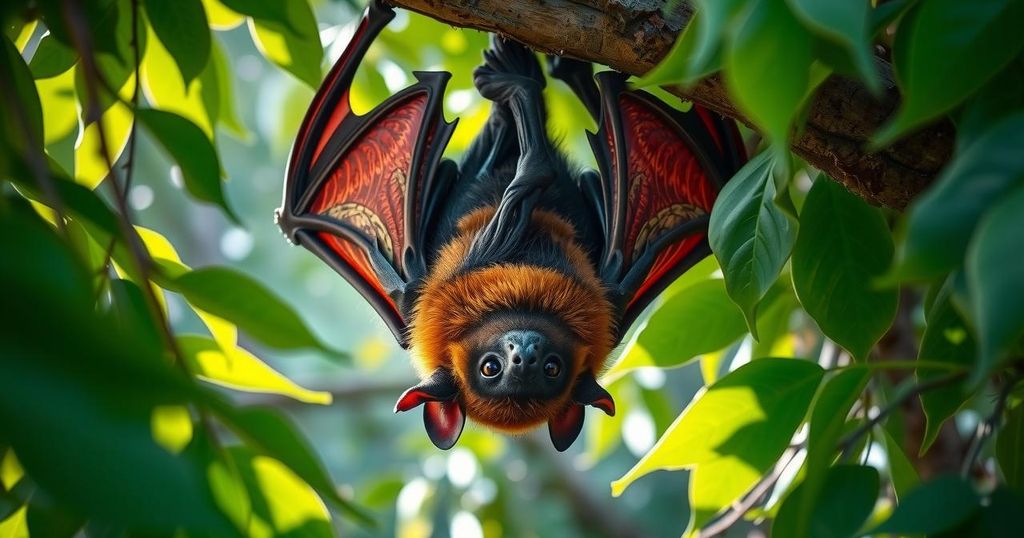Discovery of New Bat Coronavirus in Brazil Raises Questions about Human Risks

Scientists have discovered a new coronavirus in Brazilian bats that shares 72% genetic similarity with the MERS virus. While the risk to humans is currently unclear, further experiments are planned to explore its potential infectiousness. The research underscores bats’ role as viral reservoirs and the importance of continuous health monitoring.
Recent research has revealed a new coronavirus in bats from Brazil that shows a notable similarity to the Middle East Respiratory Syndrome (MERS) virus. Discovered by scientists from São Paulo and Ceará in partnership with Hong Kong University, this virus has a genetic structure that aligns approximately 72% with the MERS-CoV genome. Within it, the spike protein components also show a 71.74% resemblance to that of the MERS virus.
The MERS virus has been responsible for over 850 fatalities since its emergence in Saudi Arabia in 2012, and human infection cases have been documented in more than two dozen countries. Despite the alarming parallels, the potential for the new Brazilian coronavirus to infect humans remains uncertain. PhD candidate Bruna Stefanie Silvério highlighted that while specific parts of the virus’s spike protein suggest a possible interaction with the receptor used by MERS-CoV, definitive conclusions cannot yet be drawn about its infectious nature.
To assess the risks posed by this newly identified virus to human health, further experimental assessments are planned at high-security laboratories in Hong Kong. According to Ricardo Durães-Carvalho, a co-author of the study, this monitoring is essential in recognizing circulating viruses and understanding the risk they may pose for transmission across various species, including humans.
The findings of this investigation, published in the Journal of Medical Virology, emerged from analyses of 423 oral and rectal swabs collected from 16 distinct bat species. Researchers detected seven coronaviruses in samples from five of those species in Fortaleza, Brazil. This new virus exhibited striking similarities to MERS-related strains from both humans and camels while also exhibiting genomic recombination, showcasing the intricate genetic diversity among coronaviruses.
Dr. Durães-Carvalho emphasized the vital role played by bats as reservoirs for emerging viruses, advocating for continuous epidemiological surveillance. He asserted the need for more systematic and integrated analyses involving multiple sectors to gather unified data effective for public health monitoring, aiming to mitigate the risks of future epidemics and pandemics.
In summary, a new coronavirus has been identified in bats in Brazil, exhibiting significant genetic similarity to the MERS virus, with a 72% genetic alignment and a 71.74% similarity in spike proteins. The implications for human health remain unclear, necessitating further high-security laboratory research. This discovery reinforces the vital role of bats in viral transmission and underlines the importance of ongoing epidemiological monitoring to safeguard public health against emerging viral threats.
Original Source: www.independent.co.uk








